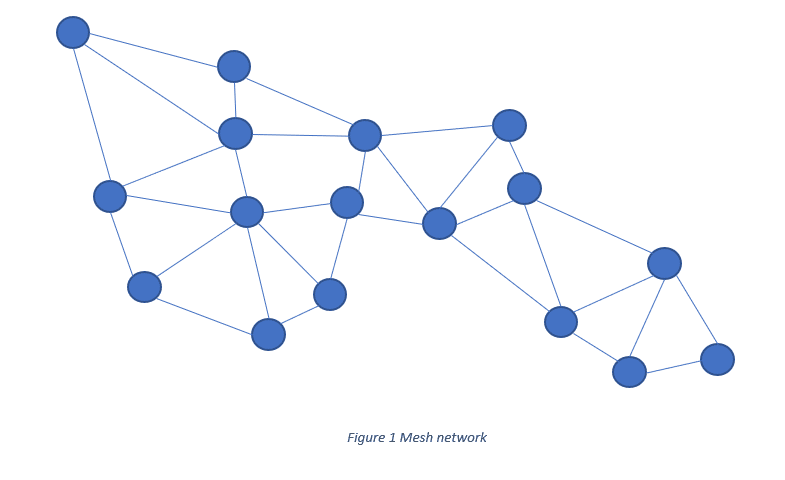
Generally, routers are the most common option when it comes to home internet requirements. However, they are not the only method that you can consider to connect your devices to your home internet. Mesh networks have emerged as a popular alternative to get an internet connection in your home. To know about Mesh Network and its advantages and disadvantages, you can follow the information provided in this guide.
About Mesh Network
A router is responsible for providing internet to your home in a traditional Wireless network. Here, nodes are interlinked in a linear pattern. In case you are using a router with a Wi-Fi extender, each extender is able to communicate to the router only, and not to other nodes. On the other side, Mesh networks are known for functioning differently. Here, there are no switches, computers, or central hubs for handling computer traffic. Each device on the mesh network is able to communicate to every other device. This implies that multiple relays can quickly direct traffic throughout different devices. There are mainly two types of mesh network topologies:
- Partially-connected mesh network
- Fully-connected mesh network
Advantages and Disadvantages of Mesh Network
Advantages of Mesh Network
Mesh networks are the best option for the right systems. Three major advantages over the other networks that Mesh Network offers are:
Scalable
There is no need of installing additional routers in Mesh networks as each node acts as a router itself. This implies that you can easily change the size of the network according to your requirement. For example, you can add a bunch of technology easily to a conference room for a limited time. You can easily move your printer, laptop, and other devices to the room, and they will connect to the network automatically.
Not only technical but non-technical apps can also benefit from this network type. For example, you can add a mesh network for lighting to any place you need. This lets you add light sources as per your requirement, along with the option to manage the complete network regardless of the location.
Problem-Free
In a mesh network, every node is capable of receiving and translating information. This not only offers redundancy but also helps keep the network running even if there is a problem. In case one of the nodes fail, the network automatically uses other nodes to complete the mesh.
Easy to Add Range
It is quite an effortless task to add range to a mesh network. All you need to do is connect nodes to gateways; it will allow messages to pass throughout the network. Moreover, mesh networks are capable of self-optimizing and finding the fastest route to carry a message.
Disadvantages of Mesh Network
In certain cases, Mesh networks can be an incorrect choice. Three disadvantages that you may experience with Mesh Network are as follow:
Workload Increased for Nodes
A lot of responsibility is carried by each node in a mesh network. Apart from delivering messages, the node also needs to act as a router. With more and more nodes added to the mesh network, the system becomes even more complex.
As nodes need to track messages from 5 to 10 neighbor nodes, every message a node passes leads to a significant increase in the amount of data to be handled. As the range of the system increases, it adds a variety of unwanted complications because of the increased data load.
Complications in Initial Network Setup
Adding a node is quite simple once a mesh network is up and running. However, implementing a mesh network from the scratch is generally a complicated task, and requires significant time compared to a traditional setup.
Latency issues will define the location where you need to put nodes. To forward messages, you might have to include dedicated nodes individually. However, this can a bit problematic as you may have to add equipment across your location so that messages can be routed quickly and properly.
Low-Power Networks Can Have Latency Issues
NOTE: Latency refers to the time a message consumes to travel from a node to a gateway.
If you are using low power, wide-area network (LPWAN), you may experience latency issues. Most LPWANs are known for not having the processing capability to handle data transfers promptly.
The latency issue can be resolved by upgrading the whole mesh network. Having access to extra bandwidth, power, and memory for each node will generally enhance message transfer speed significantly. And, yes you may have to spend a bit on it. If you have ample money and time, Mesh networks are an excellent method for your internet needs.
Increased Power Consumption for Each Node
When every node is made responsible for acting both a route and an endpoint, this workload does cause a strain. To operate correctly, every node will require more power than normal. Although, it is not a big problem when the node is large and directly connected to the electrical system, however, it causes a problem in the case of small, battery-powered nodes.
If not configured properly, security systems and lights can generally lead to issues. Moreover, as security system censors require more power to send data across rooms and doors, it becomes a bigger task compared to a traditional system.
So, these are the various advantages and disadvantages of Mesh Network that you may want to know before you use it for your internet requirements.

